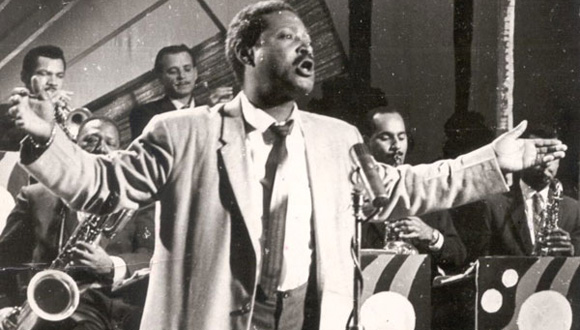
The bolero, a vocal, instrumental and danceable genre of the song movement in Cuba, has been declared ‘National Cultural Heritage’, contributing to the sustainability, visibility and viability of this expression of Cuban identity.
The Ministry of Culture said the proposal was made by the national Commission for Safeguarding of Intangible Cultural Heritage. The official act of declaration took place at the Union of Writers and Artists of Cuba (UNEAC) headquarters in Vedado, Havana, by representatives of the Commission and of the National Council of Cultural Heritage (CNPC).
Officials from the Ministry of Culture, representatives from the Embassy of Mexico, specialists from the CNPC and the Cuban Institute of Music, researchers from the National Council of Houses of Culture and musicologists from the Centre for Research and Development of Cuban Music (CIDMUC) were present with bolero musicians and singers and other guests.
The bolero was born in the city of Santiago de Cuba in 1883 and extends to the entire national territory, becoming an elegant musical poetic expression of Cuban songwriting , and Tristezas by José “Pepe” Sánchez is known as the first bolero in history.

It was composed in 1895 by the troubadour José “Pepe” Sánchez (1856-1918) in Santiago de Cuba.
From the end of the 19th century and during the first decades of the 20th, the bolero was sung in peoples’ homes and also performed by singer-songwriters in fashionable spaces, in informal peñas (soirees) and nightly serenades; in this period it was the most popular type of song in the country.
Not only does the bolero have traits of a unique musical identity, but it also has aesthetic and style codes that determine a particular way of dressing, gesturing and behaving, marked by elegance for the performers.
The Bolero artform has been developed by illustrious Cuban singer-songwriters of all times such as Sindo Garay, Manuel Corona, Benny Moré, César Portillo de la Luz, Soledad Delgado, among many others.

At present, some performers make use of their knowledge and techniques to recreate the bolero in its most traditional form, such as: José Loyola, Orlando Vistel, Marta Valdés, Josefina Carbonel, while others do so in fusing bolero with different genres, like David Torrens, Kelvis Ochoa, Osdalgia, Leoni Torres, among others.
For many years, various events and clubs related to Bolero have been developed, such as the Boleros de Oro Festival, and the different clubs around the country held in the Casas de Cultura or provincial UNEAC centres, as well as museums and other cultural institutions.
This expression has transcended national borders, being highly cultivated and popular in other countries of the Latin American and Caribbean region: Mexico, Colombia, Dominican Republic, Puerto Rico, among others.
Link to original report by CubaDebate in spanish
More about the Bolero
Bolero is a genre of song which originated in eastern Cuba in the late 19th century and as part of the trova tradition. Unrelated to the Spanish dance of the same name, boleros always have sophisticated lyrics dealing with love. It has been called the “quintessential Latin American romantic song of the twentieth century”.
Unlike the simpler, thematically diverse canción, bolero did not stem directly from the European lyrical tradition, such as Italian opera, popular in urban centres like Havana at the time. Instead, it emerged as a form of romantic folk poetry developed by troubadours from Santiago de Cuba, the trovadores. Pepe Sánchez is considered the godfather of this movement and author of the first bolero, “Tristezas”, written in 1883. Originally, boleros were sung by one trovador playing guitar. Over time, trovadores played in groups as dúos, tríos, cuartetos, etc. The Cuban Trío Matamoros and, later, the Mexican Trío Los Panchos, helped the bolero to become popular across Latin America, the US and Spain. Havana became the place where bolero composers met to create compositions and improvise new tunes.
Boleros are generally in 4/4 time and, musically, compositions and arrangements might take a variety of forms. This flexibility has enabled boleros to feature in the repertoire of Cuban son and rumba ensembles, as well as Spanish copla and flamenco singers, since the early 20th century. Occasionally, boleros have been merged with other forms to yield new subgenres, such as the bolero-son, popular in the 1930s and 1940s, and the bolero-cha, popular in the 1950s. In the United States, the rhumba ballroom dance emerged as an adaptation of the bolero-son in the 1930s. Boleros can also be found in the African rumba repertoire of many artists from Kinshasa to Dakar, due to the many Cuban bolero records that were distributed to radios there.
Listen to a recording of Tristeza (no vocals)
Listen to a recording of Benny More’s ‘Fiebre de Ti’ (Fever for you)
Listen the World Circuit recording of Dos Gardenias para Ti (Two gardenias for you) by Buena Vista Social Club sang by Ibrahim Ferrer

You must be logged in to post a comment.